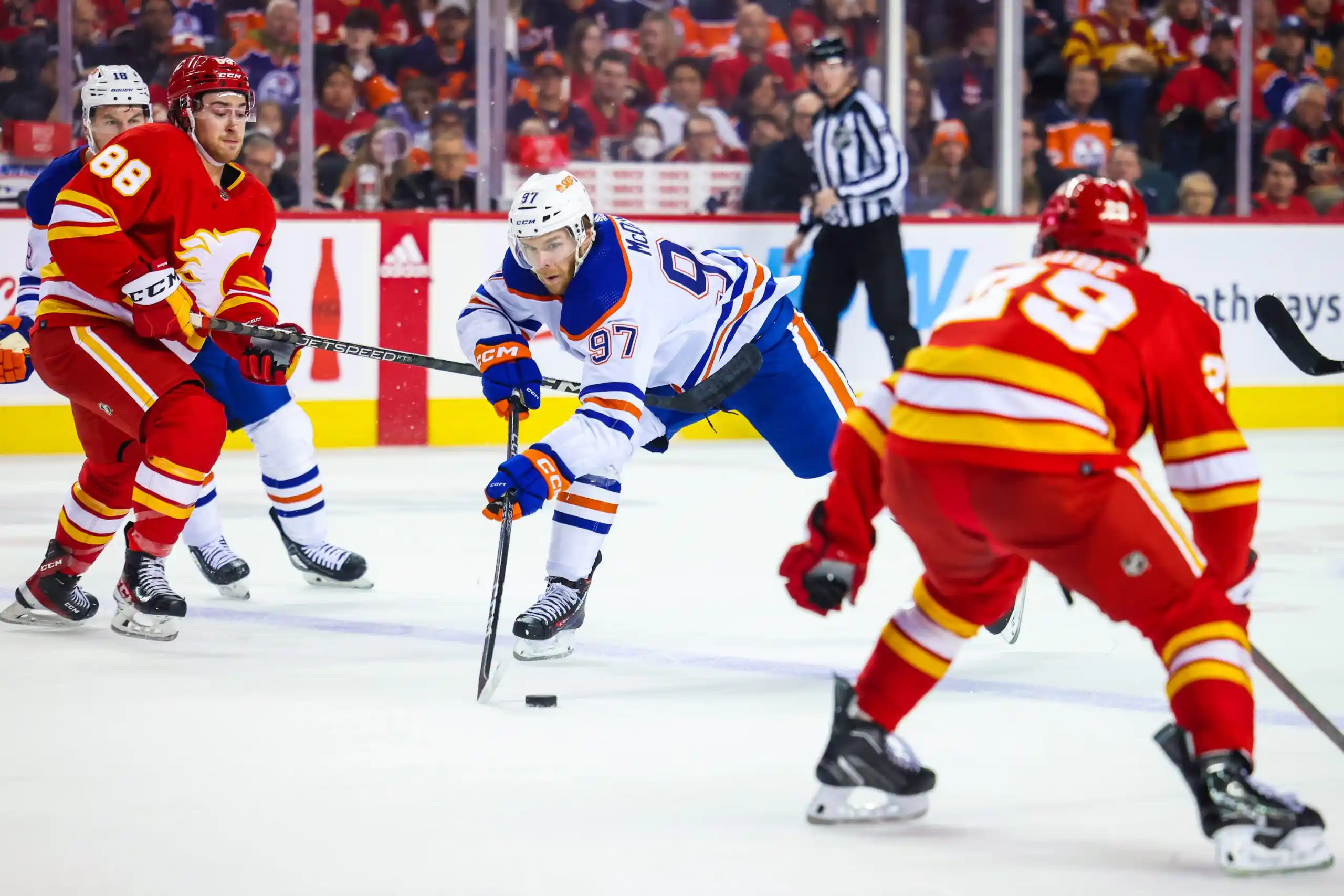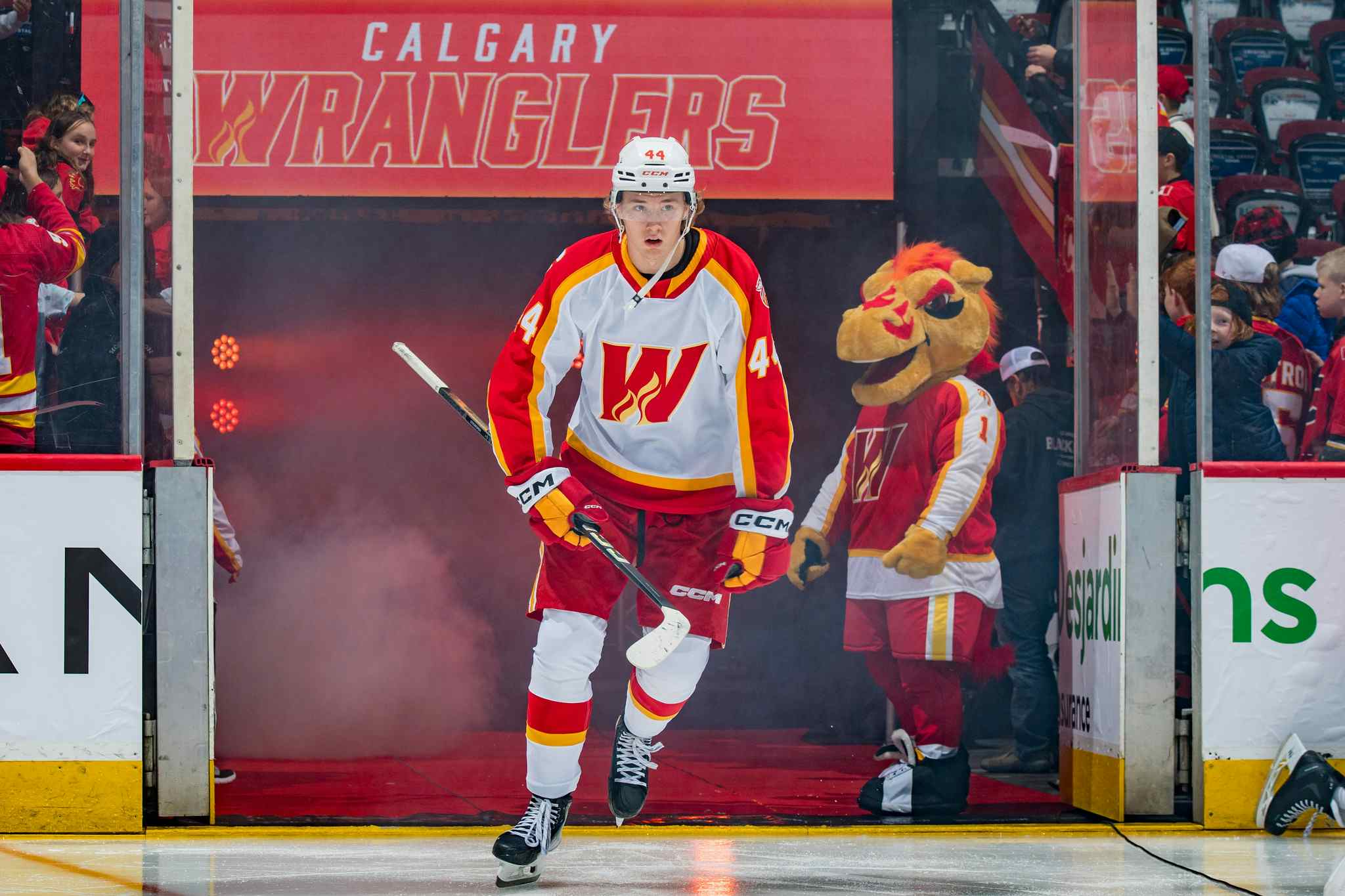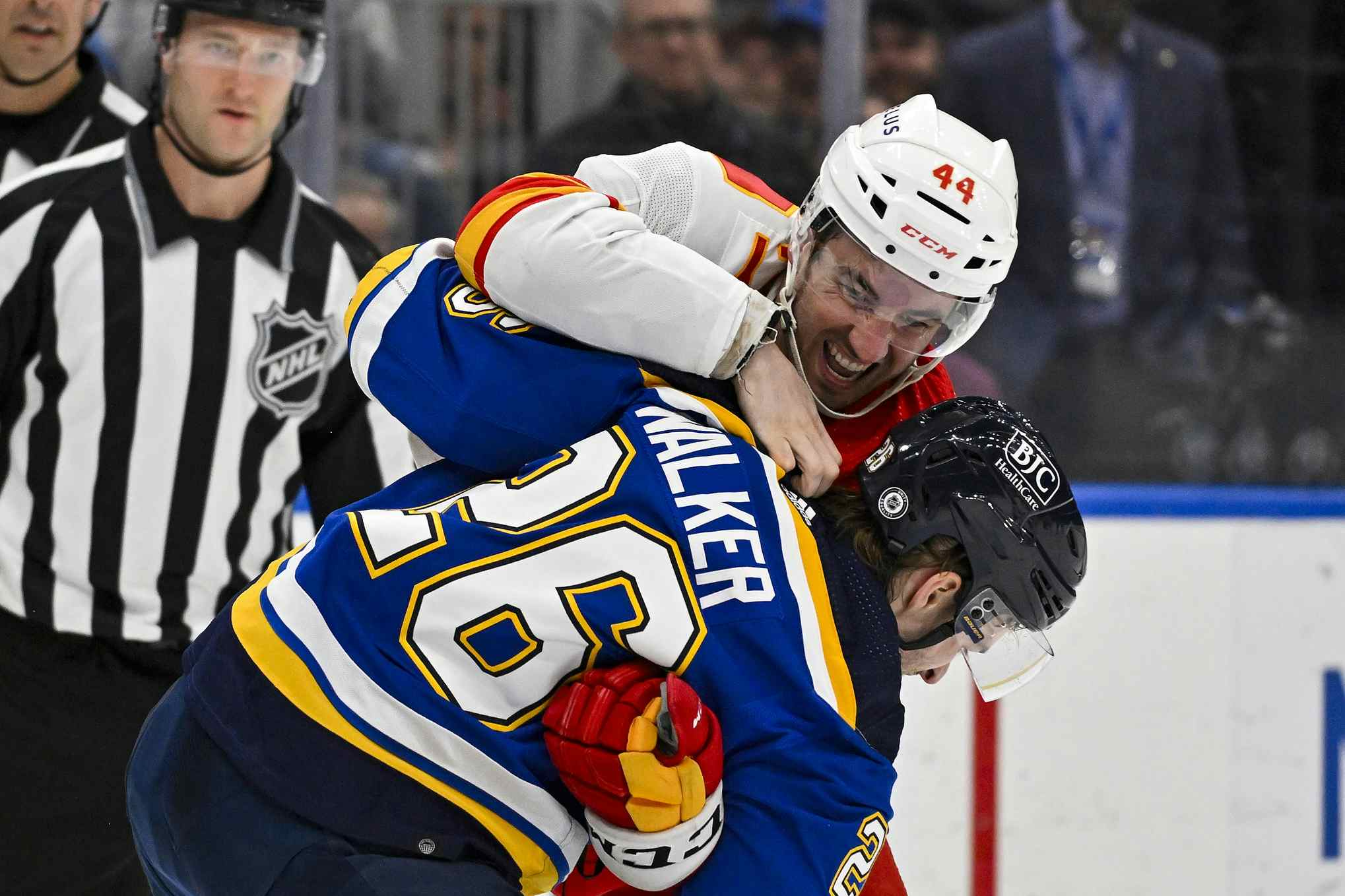Cap-wise, the Flames can afford to give Johnny Gaudreau $8 million
By Ryan Pike
7 years agoThe Calgary Flames and Johnny Gaudreau have been able to negotiate a contract extension since July 1, 2015. Understandably, they didn’t sign a long-term extension when the forward had just a single season under his belt. Both sides wanted to see what he was before committing.
The 2015-16 came and went, and Gaudreau was one of the top players in the entire National Hockey League. The Flames have had the entire off-season to negotiate a deal with Gaudreau, and a report from the Calgary Sun’s Eric Francis indicated that negotiations began in earnest in February. After nearly seven months of talks, nothing has been resolved, and the gap between the camps is reportedly close to $1.5 million: the Flames aiming for around $6.5 million, the Gaudreau camp around $8 million.
One potential sticking point for the Flames is the salary cap. However, it’s entirely possible for the Flames to give Gaudreau an $8 million payday and still fit under the cap ceiling. Here’s how it could work.
How Much Cap Space Is Spoken For?
I made a table! Here are the Flames players that are on one-way deals, plus Sam Bennett (who is a lock on the team but is on a two-way deal). Check out General Fanager’s Flames page for a organization-wide view.
| Player | Cap Hit | Running Total |
| G Brian Elliott | $2.5 million | $2.5 million |
| G Chad Johnson | $1.7 million | $4.2 million |
| D Mark Giordano | $6.75 million | $10.95 miilion |
| D Dougie Hamilton | $5.75 million | $16.7 million |
| D Dennis Wideman | $5.25 million | $21.95 million |
| D T.J. Brodie | $4.65 million | $26.6 million |
| D Ladislav Smid | $3.5 million | $30.1 million |
| D Deryk Engelland | $2.917 million | $33.017 million |
| D Jyrki Jokipakka | $700,000 | $33.717 million |
| F Sean Monahan | $6.375 million | $40.092 million |
| F Troy Brouwer | $4.5 million | $44.592 million |
| F Michael Frolik | $4.3 million | $48.892 million |
| F Mikael Backlund | $3.575 million | $52.467 million |
| F Matt Stajan | $3.125 million | $55.592 million |
| F Lance Bouma | $2.2 million | $57.792 million |
| F Brandon Bollig | $1.25 million | $59.042 million |
| F Sam Bennett | $925,000 | $59.967 million |
| F Micheal Ferland | $825,000 | $60.792 million |
| F Alex Chiasson | $800,000 | $61.592 million |
| 2015-16 Cap Overage | $630,500 | $62.2225 million |
| Mason Raymond Buyout | $1,050,000 | $63.2725 million |
Add in Gaudreau at $8 million per year, and that gives the Flames a total cap hit of $71.2725 million and $1.7275 million of cap space. That would also give the Flames two goalies, seven defensemen and 11 forwards, which is barely a legal NHL roster (two goalies, 18 skaters). They could add up to three more roster players as long as they don’t push themselves over the cap ceiling, and this is before the inevitable Ladislav Smid stint on the Long-Term Injured Reserve (LTIR).
How Does The LTIR Work?
In short: LTIR allows a team to replace an injured player with player(s) making up to the amount that the injured player makes. So for Smid, the Flames can replace him with a player (or multiple players) making up to $3.5 million and get cap relief for them. In terms of the salary cap ceiling, a team can go over the cap by the difference between the cap hit of the player they’re replacing and the cap space they already have.
The folks at Cap Friendly put together a nice little formula based on the CBA’s somewhat convoluted explanation, which we’ve adapted for this specific situation.
The league upper limit
is $73M. A team has an averaged club salary of $x68M and a player with a
cap hit of $3.5M becomes injured and the team places him on LTIR. The team
is now permitted to spend up to a new limit of $x72M:
- Cap hit of LTIR player is $3.5M
- Amount of cap space available to team = $73M – $71.2725M = $1.7275M
- Amount team can exceed the cap = $3.5M – $1.7275M = $1.7725M
- New limit = $73M + $1.7725M = $74.7725M
You get the same amount of cap relief regardless of your cap situation, but in theory being up against the cap ceiling before you declare a player on LTIR would allow you to go over the cap by that player’s full amount. Teams often maximize the value of the cap relief by bringing up extra bodies here and there throughout the year, but only for short spurts so they can divvy out their cap space efficiently.
For reference, the Flames used roughly $600,000 on short-term injury replacement call-ups last season, so Smid’s cap space would be more than they would need so long as they don’t get into big injury trouble.
Maximizing The Cap
If the Flames wanted to maximize their cap space (after giving Gaudreau $8 million), they could keep Tyler Wotherspoon ($625,000) and Freddie Hamilton ($613,500) (who both require waivers) on the roster and put their pre-LTIR cap space at $472,000 (which would allow them to go over the cap by just over $3 million). Or they could go with more expensive options like Matthew Tkachuk ($925,000), Linden Vey ($700,000) or Hunter Shinkaruk ($863,333) instead of Hamilton. Or they could demote Shinkaruk and Bennett on paper, since they’re both waiver exempt, and then bring them up on the day of the first game to avoid waivers for other players and maximize their cap space.
Long story short? The Flames have options. They have a lot of bodies that don’t require waivers, and they have the ability to float bodies down to Stockton temporarily and float them back up after Smid is declared LTIR. There are many valid reasons not to give Gaudreau an $8 million payday. The salary cap is not one of them.
Recent articles from Ryan Pike





